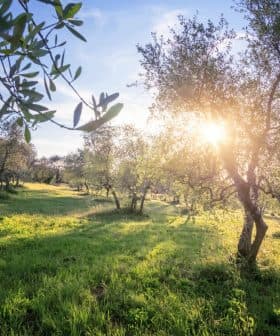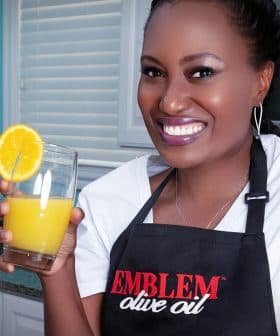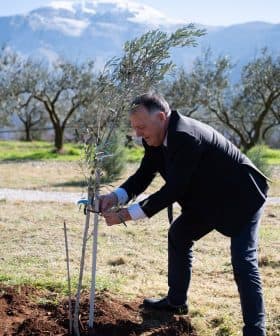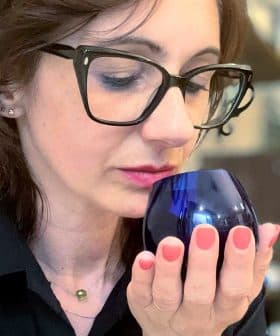Centuries-Old Groves Restored and Harvested at Trajan's Historic Home
Trajan’s Olive Oil, produced from ancient trees neglected for centuries in Civitavecchia, will be presented today. The restoration project aims to revive the area, promote olive oil culture, and support local agriculture, with plans to market the oil under a Rome PGI label.
Freshly produced Trajan’s Olive Oil will be formally presented today in Civitavecchia, a coastal city north of Rome.
The extra virgin olive oil, named after the Roman Emperor who presided over its most significant military expansion, is produced from the olives of hundreds of ancient trees which had been neglected for centuries.
(This) initiative is reviving the long-neglected area of the city into a green and lively one, with environmental and educational implications.
So far, 30 hectares of olive trees have been restored in and around the city, a challenging effort due to the uneven slopes and the thickness of the vegetation that has freely grown among the olive trees for years. Workers have 50 hectares still to address.
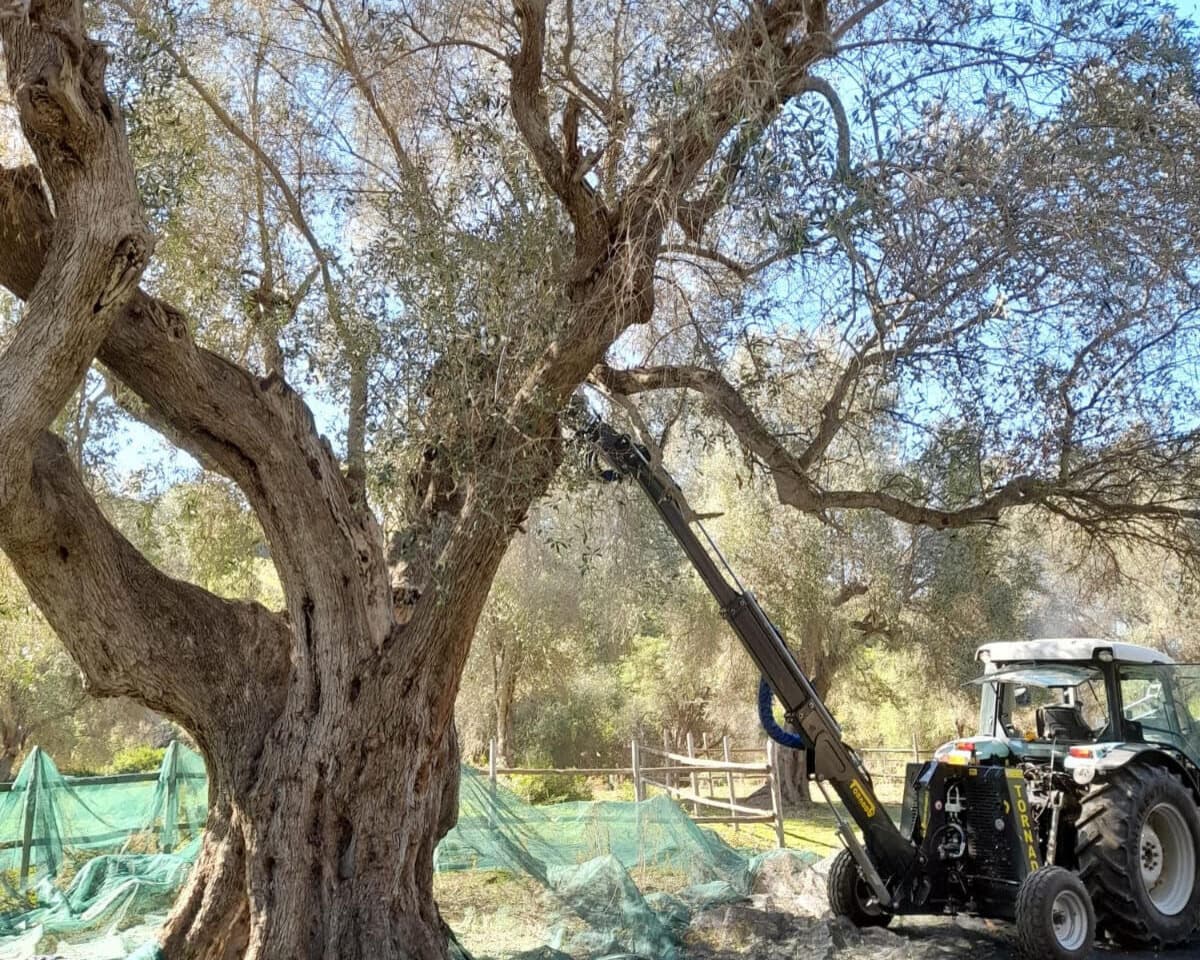
Restoration in Civitavecchia
“When you look at those trees, you cannot recognize a clear cultivation pattern; there is no traditional olive grove set up here,” Angelo Murri, an agronomist and miller at the OP Latium producer organization, told Olive Oil Times.
See Also:Farmers in Lazio Kick Off Harvest at Emperor Hadrian’s Estate“The reason is the rocky nature of the land,” he added. “We can assume many of those trees were planted where they could grow; others have probably spread naturally as the centuries went by.”
Murri is among several local experts cooperating in the new project launched by Università Agraria, a public-interest land-management organization.
“Our goal is to give new opportunities to a younger generation of farmers and food and cooking students while also boosting the olive restoration project, promoting extra virgin olive oil culture and the local food specialties,” Stefano De Paolis, owner of Tenuta del Gattopuzzo and Trajan’s Olive Oil project manager, told Olive Oil Times.
The reference to the name of the Roman Emperor comes from the historic nature of the olive grove and the ubiquitous presence of Trajan’s legacy in the region.
Trajan ruled at the end of the first century CE. He built the port that transformed Civitavecchia into a hub of Roman commerce. The port remains among the most relevant in the European Union.
Constructed over an earlier Etruscan settlement, the ancient city was named Centum Cellae (“The hundred rooms,” in Latin), which is believed to be linked to the remarkable size of the villa that Trajan had built near the port.
Trajan’s name has also been associated with the local Roman baths and the neighboring gardens. A statue of the Roman ruler still greets visitors in Civitavecchia heading toward the sea.
However, the bonds of a complex bureaucracy regarding land management and the status of Civitavecchia as a seaport hindered the restoration projects for many years, as public attention and funding were mainly dedicated to developing the supply and logistics infrastructure.
“In a city like this, dominated by industry, Trajan’s Olive Oil initiative aims to support a new approach to local agriculture, fostering olive research and olive oil quality and partnering with local schools, olive growers and millers,” De Paolis said.
“In such an environment, the Università Agraria initiative is reviving the long-neglected area of the city into a green and lively one, with environmental and educational implications,” he added.
In the past decades, small portions of Mandrione Park, where some of the olive groves are located, have sporadically been harvested by locals who are entitled to the olives of certain trees.
“When we first arrived, we did not expect to find such old trees,” Murri said. “They are living monuments which in some cases had grown up to 20 meters, with the highest branches protruding upwards, endlessly reaching for the sun while the lower portions grew mixed with the surrounding vegetation.”
“This is an extraordinary heritage, with very ancient trees whose value goes way beyond the economic implications of olive production,” De Paolis added. “After a few years of work, we have finally been able to proceed with the first experimental harvest.”
Due to the cultivation and production methods, Trajan’s Olive Oil meets the requirements to be certified as a Rome PGI (Protected Geographical Indication) olive oil.
In front of those broad old trees, Murri and his colleagues map the restored portions of the olive grove, identifying the olive varieties and their quantities.
See Also:Olive Oil Production Revived in The Former Papal States“From our first surveys, we can say that there are, on average, approximately 50 to 60 olive trees per hectare for a total of more than 2,000 trees,” Murri said.
While most of the olive varieties are usually grown in the region, such as Canino, Leccino and Moraiolo, about 40 percent of the grove comprises the much rarer Sirole cultivar. All of the varieties are included in the Rome PGI.
Murri added that most of the surveyed trees are centuries old. “While a thorough analysis should be carried out to have a precise determination, I say that there are many 700 to 800 years old,” with the possibility of some being more than 1,000 years old.
For various reasons, harvesting the olives has been a daunting task. They almost exclusively grow on the highest parts of the canopy, inextricably mixed with abundant branches and other vegetation.
“We could not proceed with any conventional method,” Murri said. “There were so many leaves and dry branches in the lower portions.”
However, Bolsena, a local agribusiness, supplied the initiative with its olive shaker. “Then they separated the olives from the dry branches to avoid bringing tons of wood to the mill,” Murri added.
Even after the first experimental harvest was conducted, the parties behind the initiative are already looking ahead at work to be done before the 2023 harvest.
“That is the real challenge, to restore those ancient trees and bring them back to production,” Murri said. “Pruning must be carried out with a very delicate approach to maintain the extraordinary nature of the trees, working to lower the green canopy bit by bit.”
“The harvest will always need a shaker,” he added. “The good thing is that the trees are healthy and have strong roots that have grown for centuries.”
The first 10 days of the experiment harvest produced 2,500 kilograms of olives. “It is so little when you think of the number and dimension of the trees, but the harvesting has been a highly complex operation,” De Paolis said.
“Still, both the growers and ourselves have acquired some experience now, and the youngsters who worked with us have also benefited from a beautiful and natural experience,” he added.
The Rome PGI labels will allow Università Agraria to market the new extra virgin olive oil with a highly recognizable logo featuring the Colosseum.
“It is part of a strategy to give Trajan’s extra virgin olive oil bottles the context they need to appeal to customers,” De Paolis said.
“A series of events are also planned from December to involve local culinary students and present the extra virgin olive oil to consumers, exporters and food experts to give value to the unique connection among local food specialties, agricultural opportunities, history and global markets,” he concluded.



